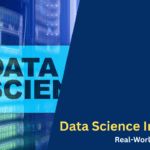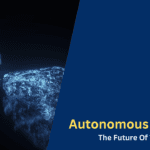Data Science In Action: Real-World Applications
Hello, guys, welcome to our blog. Here in this article, we will discuss “Evolution of Data Science, Data Science in Action and Applications of Data Science in Real Life”.
Ask questions if you have any electrical, electronics, or computer science doubts. You can also catch me on Instagram – CS Electrical & Electronics.
Also, read:
- What is XCP (Universal Measurement and Calibration Protocol)? Introduction, Working, Purpose, Applications
- What Is SIL Testing, Software-In Loop, Working, Purpose
- UDS (Unified Diagnostic Services) Tutorials For Automotive Engineers
Evolution of Data Science
Data Science has undergone a significant evolution over the years, shaped by advancements in technology, changes in data availability, and the growing recognition of its potential across various domains. Here is a brief overview of the evolution of Data Science:
1. Early Foundations (1960s-1980s): The roots of Data Science can be traced back to the early days of statistics and computer science. During this period, statisticians and researchers focused on developing mathematical models and algorithms for data analysis. The emphasis was on the statistical methods used to extract insights from data.
2. Rise of Big Data (2000s): The term “Big Data” gained prominence in the 2000s, reflecting the challenges posed by the explosion of data volume, variety, and velocity. The advent of technologies like Apache Hadoop enabled the storage and processing of massive datasets. This era marked a shift towards scalable and distributed computing for handling large-scale data analytics.
3. Emergence of Data Science as a Discipline (2010s): The 2010s saw the formalization of Data Science as a distinct discipline. Organizations began recognizing the value of extracting actionable insights from data, leading to the establishment of dedicated Data Science teams. Tools and platforms like Python, R, and Jupiter Notebooks gained popularity for data analysis and machine learning.
4. Machine Learning and Artificial Intelligence (the 2010s-2020s): The integration of machine learning (ML) and artificial intelligence (AI) into Data Science workflows became more pronounced. ML algorithms and deep learning techniques allowed Data Scientists to build predictive models and extract complex patterns from data. AI applications, such as natural language processing and computer vision, became integral to Data Science projects.
5. Interdisciplinary Collaboration (Present): The present era emphasizes interdisciplinary collaboration within Data Science. Data Scientists work closely with domain experts, business analysts, and decision-makers to ensure that data-driven insights align with organizational goals. The focus extends beyond technical skills to include effective communication and domain knowledge.
6. Ethics and Responsible AI (Present-Future): As the impact of Data Science on society becomes more evident, there is a growing emphasis on ethical considerations and responsible AI practices. Data Scientists are increasingly aware of the ethical implications of their work, including issues related to bias, fairness, and privacy. The field is evolving to incorporate ethical guidelines and frameworks.
7. Advancements in Data Science Technologies (Future): The future of Data Science is expected to be characterized by continuous advancements in technologies and methodologies. The integration of automation, augmented analytics, and more advanced AI capabilities will further enhance the efficiency and effectiveness of Data Science workflows. Data Science is likely to play a pivotal role in addressing global challenges and driving innovation across industries.
The evolution of Data Science reflects its transformative journey from traditional statistical methods to a multidisciplinary field at the forefront of technological innovation. As the field continues to evolve, Data Scientists are poised to tackle increasingly complex challenges and unlock new possibilities for leveraging data to make informed decisions.
Data Science In Action
Data Science comes to life when applied to real-world problems, providing actionable insights and driving informed decision-making. Consider a scenario in the e-commerce industry where a company wants to enhance its customer experience and optimize its operations using data science.
Firstly, data scientists gather and preprocess large volumes of data, including customer transactions, website interactions, and social media feedback. This data is then cleaned, transformed, and prepared for analysis.
Using machine learning algorithms, the data scientists can segment customers based on their preferences, purchase history, and browsing behavior. This segmentation allows the company to tailor marketing strategies, recommend personalized products, and optimize pricing strategies for different customer segments.
Predictive analytics can be employed to forecast demand for specific products, helping the company manage inventory efficiently and prevent stockouts or overstock situations. Additionally, sentiment analysis on social media data can provide insights into customer opinions and identify areas for improvement in products or services.
A/B testing, another data science technique, allows the company to experiment with different website layouts, promotional strategies, or product placements to determine what resonates most with its customers. Through continuous monitoring and analysis, the company can iteratively refine its strategies based on data-driven insights.
Moreover, anomaly detection algorithms can help identify unusual patterns or potential fraud in transactions, enhancing the company’s security measures. By leveraging data science, the e-commerce company not only improves customer satisfaction but also optimizes its internal processes, making data-driven decisions that positively impact its bottom line.
This example illustrates how data science, through a combination of statistical analysis, machine learning, and predictive modeling, can provide actionable solutions for businesses, fostering innovation, efficiency, and a competitive edge in the dynamic landscape of today’s industries.
Applications Of Data Science In Real Life
Data Science has found widespread applications across various industries, transforming the way organizations operate and make decisions. Here are some real-life applications of Data Science:
1. Healthcare: Data Science is revolutionizing healthcare by analyzing patient data to improve diagnostics, predict disease outbreaks, and personalize treatment plans. Predictive analytics helps identify individuals at risk, and machine learning models aid in medical image analysis for the early detection of diseases.
2. Finance: In the financial sector, Data Science is used for fraud detection, credit scoring, and risk management. Algorithms analyze vast amounts of financial data to identify unusual patterns that may indicate fraudulent activities. Predictive modeling helps assess creditworthiness and manage investment portfolios.
3. E-Commerce: E-commerce platforms leverage Data Science for personalized recommendations, demand forecasting, and customer segmentation. Algorithms analyze user behavior, preferences, and purchase history to suggest products, optimize pricing, and enhance the overall shopping experience.
4. Transportation and Logistics: In logistics, Data Science is applied for route optimization, demand forecasting, and fleet management. Analyzing historical and real-time data helps companies streamline supply chains, reduce transportation costs, and improve delivery efficiency.
5. Education: Data Science plays a role in education by analyzing student performance data to identify learning patterns, predict success rates, and personalize educational content. Learning analytics provide insights that enable educators to tailor their teaching approaches to individual student needs.
6. Energy: In the energy sector, Data Science is used for predictive maintenance of equipment, optimization of energy consumption, and forecasting energy demand. Smart grids, driven by data analytics, enable more efficient distribution and consumption of energy resources.
7. Telecommunications: Data Science is employed in telecommunications for network optimization, fraud detection, and customer churn prediction. By analyzing call data records and user behavior, telecom companies can enhance network performance and implement targeted marketing strategies.
8. Marketing and Advertising: Marketers use Data Science for customer segmentation, targeted advertising, and campaign optimization. Analyzing consumer data helps tailor marketing strategies to specific demographics, improving the effectiveness of advertising efforts.
9. Social Media: Social media platforms rely on Data Science for content recommendation, sentiment analysis, and user engagement predictions. Algorithms analyze user interactions to personalize content feeds and identify trends in real time.
10. Manufacturing: In manufacturing, Data Science is applied for quality control, predictive maintenance, and process optimization. Sensors and IoT devices generate vast amounts of data, which can be analyzed to prevent equipment failures, reduce downtime, and enhance overall efficiency.
These examples showcase the diverse and impactful applications of Data Science across different sectors. As organizations continue to recognize the value of data-driven insights, the influence of Data Science in shaping decision-making and innovation is expected to grow even further.
This was about “Data Science in Action: Real-World Applications “. I hope this article may help you all a lot. Thank you for reading.
Also, read:
- 10 Tips To Maintain Battery For Long Life, Battery Maintainance
- 10 Tips To Save Electricity Bills, Save Money By Saving Electricity
- 100 (AI) Artificial Intelligence Applications In The Automotive Industry
- 100 + Electrical Engineering Projects For Students, Engineers
- 1000+ Control System Quiz, Top MCQ On Control System
- 1000+ Electrical Machines Quiz, Top MCQs On Electrical Machines
- 1000+ MATLAB Simulink Projects For MTech, Engineering Students
- 50 Tips To Save Electricity At Home, Shop, Industry, Office
Author Profile
- Content Writer








